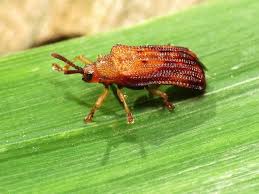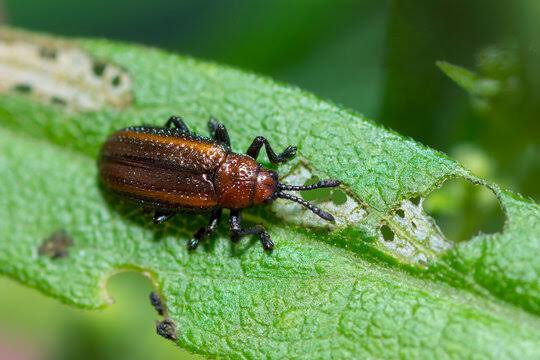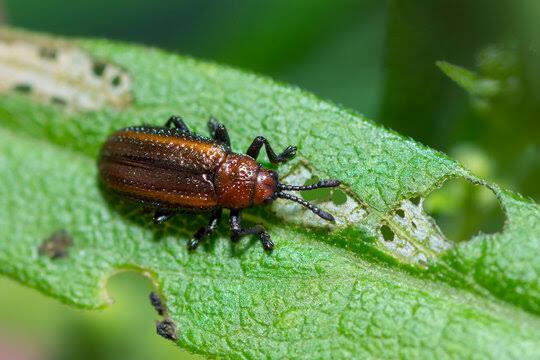Leaf miners, scientifically known as Lepidoptera larvae, are tiny insects that cause damage to plants by feeding on the internal tissues of leaves. These small pests belong to the order Lepidoptera and can be found worldwide. They undergo a complete metamorphic life cycle, starting as eggs laid on the surface of leaves.
These larvae hatch into caterpillars, the active feeding stage of the leaf miner. Unlike other insects that chew on leaves from the outside, leaf miners tunnel through the leaf tissue, creating distinctive serpentine trails or mines. This feeding behavior not only damages the aesthetic appearance of plants but also disrupts their ability to carry out essential functions like photosynthesis.
One of the key characteristics of leaf miners is their adaptability to a wide range of host plants. They infest various types of crops, ornamental plants, and trees. Common examples of plants affected by leaf miners include tomatoes, spinach, and citrus trees. The damage caused by leaf miners can lead to reduced crop yields and economic losses for farmers.
Controlling leaf miners poses a challenge due to their protected location within the leaves. Pesticides are commonly used, but their effectiveness may vary. Some natural predators, such as parasitic wasps, play a crucial role in controlling leaf miner populations. These wasps lay their eggs on or inside the leaf miner larvae, ultimately leading to their demise.
Crop rotation and the use of resistant plant varieties are additional strategies employed to manage leaf miner infestations. It’s important for farmers and gardeners to monitor their plants regularly for signs of leaf miner activity and take timely action to prevent widespread damage.
However, leaf miners, scientifically classified as Lepidoptera larvae, are small insects that tunnel through leaves, causing harm to a variety of plants. Their adaptability and destructive feeding behavior make them a significant concern for agriculture and horticulture.
Efforts to control leaf miners involve a combination of chemical and biological methods, along with preventive measures like crop rotation. Vigilance in monitoring and managing these pests is essential for maintaining the health and productivity of plants.
Read Also: Loquats: History, Nutrition, Health Benefits and Growing Guide
Plants Affected by Leaf Miners (Lepidoptera larvae)

Leaf miners are known to affect a wide variety of plants, spanning different types of crops, ornamental plants, and trees. Some common examples of plants that can be impacted by leaf miners include:
1. Tomatoes: Tomato plants are susceptible to leaf miner infestations, which can affect the quality and yield of the fruits.
2. Spinach: Leafy greens like spinach are often targeted by leaf miners, causing damage to the foliage and potentially reducing the overall harvest.
3. Citrus Trees: Trees bearing citrus fruits, such as oranges and lemons, can be affected by leaf miners, impacting the health of the trees and the quality of the fruit.
4. Beans: Certain types of beans, including snap beans and green beans, may also fall victim to leaf miner damage.
5. Potatoes: Leaf miners can pose a threat to potato crops, affecting the leaves and potentially impacting tuber development.
6. Melons: Plants like watermelons and cantaloupes may experience leaf miner damage, affecting the growth and quality of the fruits.
7. Flowering Plants: Ornamental plants, including various flowering species, can be targeted by leaf miners, leading to aesthetic concerns for gardeners.
8. Vegetables: Leaf miners can infest a range of vegetables, such as lettuce and cabbage, affecting both the appearance and edibility of the produce.
It’s important for farmers, gardeners, and horticulturists to be vigilant in monitoring these and other susceptible plants for signs of leaf miner activity. Early detection and appropriate pest management strategies are essential to mitigate the impact of leaf miners on plant health and productivity.
Damages Caused by Leaf Miners

Leaf miners can inflict various damages on plants, affecting their overall health and productivity. The primary consequences of leaf miner infestations include:
1. Reduced Photosynthesis: As leaf miners tunnel through the internal tissues of leaves, they disrupt the normal structure and function of the foliage. This interference can lead to a reduction in the plant’s ability to undergo photosynthesis, a vital process for producing energy and nutrients.
2. Stunted Growth: The feeding activity of leaf miners can impede the normal growth of plants. This stunting effect is particularly detrimental in crops, where optimal growth is crucial for achieving high yields.
3. Decreased Crop Yields: Leaf miner damage often results in reduced crop yields. In agricultural settings, this can have significant economic implications, as farmers may experience lower harvests and financial losses.
4. Aesthetic Damage: The distinctive serpentine trails or mines left by leaf miners on leaves can cause aesthetic damage to ornamental plants. This is a concern for gardeners and landscapers who aim to maintain the visual appeal of their gardens.
5. Weakened Plants: Prolonged infestations by leaf miners can weaken plants, making them more susceptible to other stress factors, diseases, or additional pest attacks. This weakened state can have cascading effects on the overall health of the plant.
6. Quality Issues in Fruits and Vegetables: When leaf miners target plants that produce fruits or vegetables, the quality of the produce may be compromised. This can result in fruits with blemishes, deformities, or reduced nutritional value.
7. Secondary Infections: The wounds created by leaf miners during their feeding activities provide entry points for pathogens. This can lead to secondary infections, further exacerbating the damage and negatively impacting plant health.
Efforts to manage and control leaf miners aim to minimize these damages and ensure the continued health and productivity of affected plants. Implementing integrated pest management strategies, including monitoring, biological controls, and judicious use of pesticides, is crucial in mitigating the impact of leaf miners on crops and ornamental plants alike.
Read Also: Quinces: History, Nutrition, Health Benefits and Growing Guide
Control and Preventive Measures

Controlling and preventing leaf miner infestations involves a combination of strategies to manage these pests. Here are various measures that can be implemented:
1. Monitoring: Regularly inspect plants for signs of leaf miner activity, such as serpentine trails or mines on leaves. Early detection allows for timely intervention and helps prevent widespread damage.
2. Biological Controls: Encourage natural predators of leaf miners, such as parasitic wasps and predatory beetles. These beneficial insects can help keep leaf miner populations in check by parasitizing or preying on the larvae.
3. Crop Rotation: Rotate crops to disrupt the life cycle of leaf miners. Moving susceptible plants to different locations can reduce the buildup of leaf miner populations in specific areas.
4. Resistant Plant Varieties: Select and plant varieties that are resistant or less susceptible to leaf miner infestations. This can be an effective preventive measure, especially in agricultural settings.
5. Use of Trap Crops: Plant trap crops that are attractive to leaf miners but less valuable than the main crop. This can lure leaf miners away from the desired plants, acting as a form of diversion.
6. Beneficial Nematodes: Introduce beneficial nematodes to the soil. These microscopic organisms can target and control leaf miner larvae in the soil, helping to reduce populations.
7. Natural Predators Release: Release commercially available natural enemies, such as predatory beetles, to control leaf miner larvae. This can be a targeted and environmentally friendly approach.
8. Physical Barriers: Use floating row covers to physically protect plants from adult leaf miners. These covers can be placed over crops, acting as a barrier to prevent egg-laying.
9. Proper Plant Nutrition: Maintain optimal plant nutrition to promote plant health and resilience. Healthy plants are better equipped to withstand and recover from leaf miner damage.
10. Judicious Use of Pesticides: If necessary, apply insecticides carefully and according to recommended guidelines. Consider using insecticides that are specifically effective against leaf miners while minimizing harm to beneficial insects and the environment.
11. Pruning Infested Leaves: Remove and destroy heavily infested leaves to reduce the overall leaf miner population and prevent the spread of the infestation.
Implementing an integrated pest management (IPM) approach that combines several of these measures can be highly effective in controlling leaf miners while minimizing the impact on the surrounding ecosystem and non-target organisms.
Frequently Asked Questions (FAQs) About Leaf Miners (Lepidoptera larvae)
1. Q: What are leaf miners?
A: Leaf miners are tiny insects, specifically the larvae of moths, butterflies, or flies, that tunnel through the internal tissues of leaves, creating distinctive serpentine trails or mines.
2. Q: What plants are commonly affected by leaf miners?
A: Leaf miners can affect a wide range of plants, including tomatoes, spinach, citrus trees, beans, potatoes, melons, various vegetables, and ornamental flowering plants.
3. Q: How do I identify leaf miner damage on my plants?
A: Look for serpentine trails or mines on leaves, which are indicative of leaf miner feeding. Infested leaves may also show discoloration, and in severe cases, plants can exhibit stunted growth.
4. Q: What is the life cycle of leaf miners?
A: Leaf miners undergo a complete metamorphic life cycle, starting as eggs laid on leaves. The eggs hatch into larvae (caterpillars), which then feed on the internal tissues of leaves. The larvae pupate and eventually emerge as adult moths, butterflies, or flies.
5. Q: How can I control leaf miners without using pesticides?
A: Implementing biological controls, such as releasing natural predators like parasitic wasps, using trap crops, introducing beneficial nematodes, and employing physical barriers like floating row covers, are ways to control leaf miners without relying heavily on pesticides.
6. Q: Are there plants that are resistant to leaf miners?
A: Yes, some plant varieties exhibit resistance or lower susceptibility to leaf miner infestations. Choosing and planting resistant varieties can be an effective preventive measure.
7. Q: Can leaf miner damage be reversed?
A: While severe damage may not be reversible, taking timely control measures and promoting plant health through proper nutrition and care can help plants recover from leaf miner infestations.
8. Q: Do leaf miners only impact agricultural crops?
A: No, leaf miners can also affect ornamental plants, flowering plants, and trees in addition to agricultural crops.
9. Q: How often should I monitor my plants for leaf miners?
A: Regular monitoring, especially during the growing season, is recommended. Frequent checks allow for early detection and prompt action to control leaf miners.
10. Q: Can I use chemical insecticides to control leaf miners?
A: Yes, chemical insecticides can be used if necessary, but their use should be judicious and in accordance with recommended guidelines to minimize environmental impact and harm to beneficial insects. Integrated pest management approaches are often encouraged.
Read Also: Hydroponics Guide 101: All You Need to Know About it

